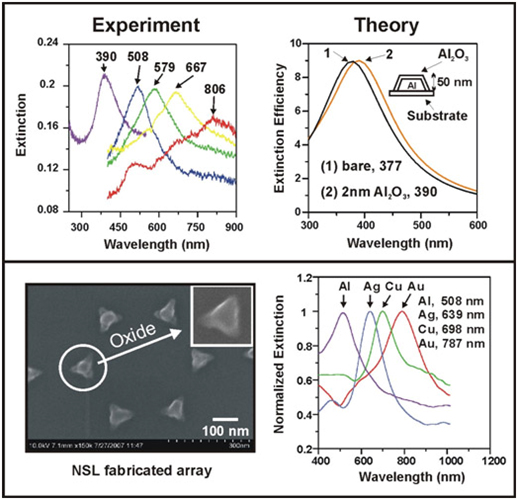A plasmon is the result of light interacting with the surface electrons in materials that meet specific dielectric requirements. Noble metals have long been used as plasmonic materials, yet other materials are capable of supporting surface plasmons. Recent work in the Van Duyne lab has shown that aluminum nanoparticles fabricated using a process known as nanosphere lithography (NSL) display plasmons throughout the UV-vis region. Both from experiment and theory, the presence of an oxide layer does not significantly affect their plasmonic properties. As a result, a promising plasmonic active UV material has been developed for use in surface enhanced spectroscopies (i.e., Raman) and in plasmonic devices. 